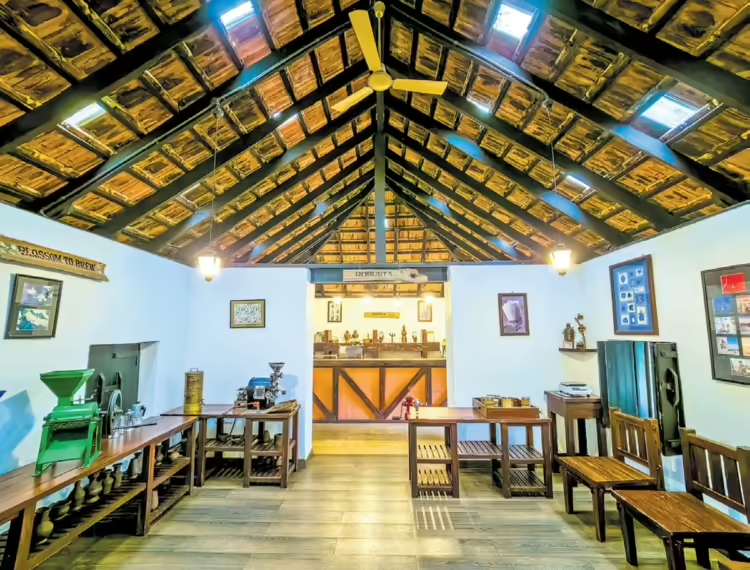There was a bean, brewed that
Were you aware that Coorg is considered the Indian equivalent of a coffee cup? On a breezy day at The Tamara Coorg, naturalist Bindu Shree invites the eclectic group of nine people on a plantation tour. A few give a head nod. She tells the gathering, “India is the fifth-largest producer of coffee globally, with over 70% originating from the two areas of Karnataka: 40% from Coorg and 30% from Chikmagalur.

The purpose of the luxury resort’s daily plantation excursions is to educate guests about the local wildlife and flora while also introducing them to the expansive coffee plantations that cover 184 acres of land at an elevation of almost 3,500 feet above sea level. Bindu pauses to point out various plants and flowers as she guides the party up a gentle uphill ascent. She also shares information and quizzes the rider, saying, “Whoever answers correctly will get an extra cup of coffee.”
While some of the more absurd choices make people chuckle, others are able to demonstrate their general knowledge.
She invites the group to look down and see coffee bushes behind the twisted heliconia bushes, colorful hibiscus plants, and elephant ear fig trees, all on a somewhat higher height. The naturalist continues by explaining that coffee is only cultivated in India under shade. The environment and ecology have an impact on the quality and flavor. Her grin says, “Coffee produced in shade is flavorful and fragrant.
By this point, coffee trees with small red berries poking through the leaves surround the group. As everyone smells and feels the smooth, velvety fruit, Bindu plucks a handful and holds them up for closer examination. Despite having a similar appearance, not all coffee bushes have the same size leaves.
According to the naturalist, Arabica bushes have lower caffeine content than Robusta coffee plants, which produce smaller, higher-caffeine beans on smaller, smaller stems with larger berries. She continues, “The coffee berries are hand-picked and sun-dried for additional processing.”
the method of roasting
The company was craving a hot cup of coffee by now, having been treated to a spectacular view of the far mountains and coffee plantations throughout their ascent up the mountainside. They march forward in anticipation of the Blossom to Brew session, where they will get hands-on experience roasting beans, learning about the brew, and, of course, enjoying a fragrant cup. As the name implies, the focus of the event is learning how the stunning red berries become the world’s most popular drink. On exhibit are miniature replicas of the pulping and hulling machinery used in various post-harvest operations. The naturalist has further information that is waiting for the participants. Normally, a single coffee berry contains two beans, but sometimes, a single bean known as a peaberry is found. It is regarded as premium and has more caffeine,” she says.
Berries for coffee
Bindu begins roasting by taking the proper quantity of Robusta peaberries and Arabica beans. A gentle popping sound emanates from the machine, and the aroma of freshly roasted coffee fills the room as there is a gradual build-up. After the beans cool down, they are ground while each person has a turn manually agitating the grinding apparatus. Hot mugs of coffee are served around as the session draws to a finish. While some people loiter and engage in conversation, others go out to discover cozy spots where they may enjoy their preferred drink by themselves. It is satisfying for coffee connoisseurs to learn about and enjoy the coffee bean’s journey.






